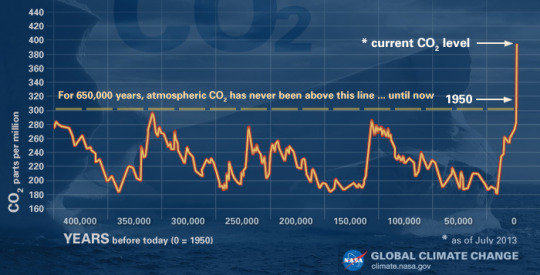By Niki Woodard
Most
of us have read about the oceans rising and acidifying, storms intensifying,
and species dying off. We’ve read statistics like this: The 30-year time period between 1983
and 2012 was the warmest in the Northern Hemisphere within the last 1,400 years.
And we’ve seen charts like this:

Yet, our collective response to the problem does not sync up
with the gravity and urgency of the problem. Perhaps it’s because the prospect
of finding solutions seems so daunting.
But the truth is, we created this crisis in a relatively
short amount of time, and we can also undo the damage.
The solution has layers, and we’re all part of each of them:
Household & community actions: The
The Climate Center was founded on the idea that “local actions power
global change.” Feel the power that you can harvest through your everyday
decisions to compost, carpool, bike, use low-energy, high-efficiency appliances
and fixtures, shop locally, recycle and reuse, and encourage your friends and
family to tread lightly on this singular and human-fatiguing planet. This is the
first layer of action. Meaningful progress requires much more.
Business and economic actions: Sonoma
County is proving that green business solutions make economic sense. Companies
like Enphase, Soiland, The Ratto Group,Calpine, Redwood Hill Farm, Sonoma Mountain Village, and many more are
producing greener products, conducting their business in greener ways, and offering
green incentive opportunities to employees, exemplifying the economic benefits
of green business. We applaud the efforts of all those engaged in the Business for Clean Energy.
Business moves change, and each of these businesses is a role model of
progress.
Local/regional policies: Financing
programs such as Windsor’s Pay As You Save (PAYS),
the Property Assessed Clean Energy (PACE), and Ygrene
help make it financially feasible to
implement carbon-reducing upgrades to home and business. And our new local
electricity provider, Sonoma Clean Power, now offers a greener electricity
portfolio to reduce greenhouse gases, with an option to go 100%
renewable. These homegrown solutions are strategic models that can be
replicated to reduce emissions at the speed and scale demanded by the crisis we
face.
State and national policy actions: California is ahead of the curve, nationally, and
Sonoma County is further ahead, still. But the United States is behind the
curve worldwide. As both local and global citizens, we can do more. We can
elect public officials who prioritize climate action and we can lobby for
legislation that truly makes a significant impact on greenhouse gas reduction.
Stay tuned for campaign advocacy opportunities, from us and our partners.
Spotlight on Sonoma
County
Sonoma County is a leader in advancing climate-protecting
strategies and solutions. We were among the first in the nation to develop a
comprehensive Climate
Action Plan and were recognized by the White House last winter as one of 16
national Climate
Action Champions for our commitment to cutting carbon pollution and building
regional resilience.
In 2005, Sonoma County and all nine of its cities pledged to
reduce greenhouse gas emissions 25% below 1990 levels, equal to about 2.6
million tons of CO2, by 2015. The aggressive goal aligns with the scientific
imperative for sustaining life, which is a reduction of global carbon levels to
350 parts per million.
In order to monitor progress toward its goal, Sonoma County has
been tracking its carbon emissions. Recently, The Climate Center
issued its Sonoma County Greenhouse Gas Report for 2014, which showed emission
reductions while also indicating an almost sure shortfall of the 2015
goal.
The report is an important tool for monitoring the county’s
vital signs, and demonstrates Sonoma County’s commitment to doing its part
locally to impact the global problem. Though we have a steep road ahead of us,
we accept the challenge and march forward with hope and optimism to inspire our
own community and others, near and far, to invest their dollars, time, and
effort to aggressively and creatively address climate change.
Read more about Sonoma County’s GHG Report:
[Niki Woodard is the Communications & Marketing Director for The Climate Center.]